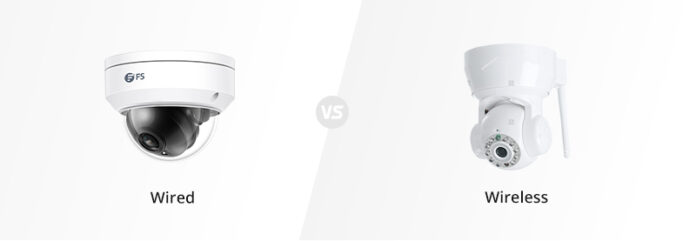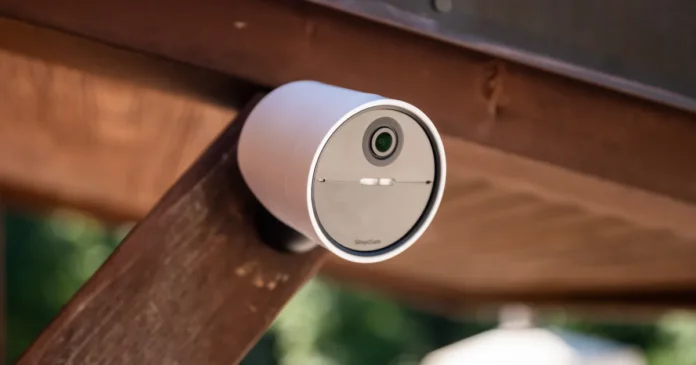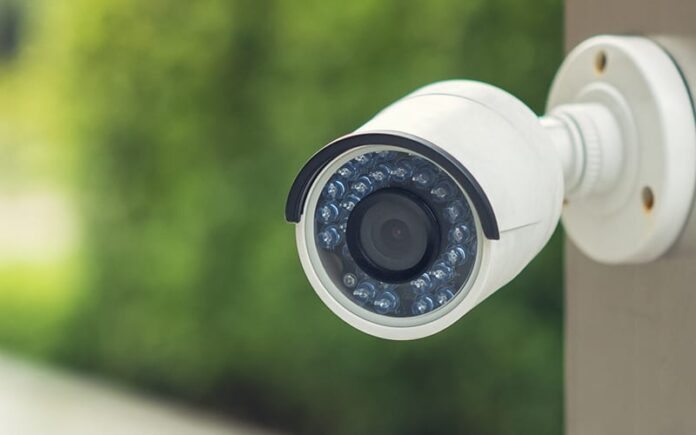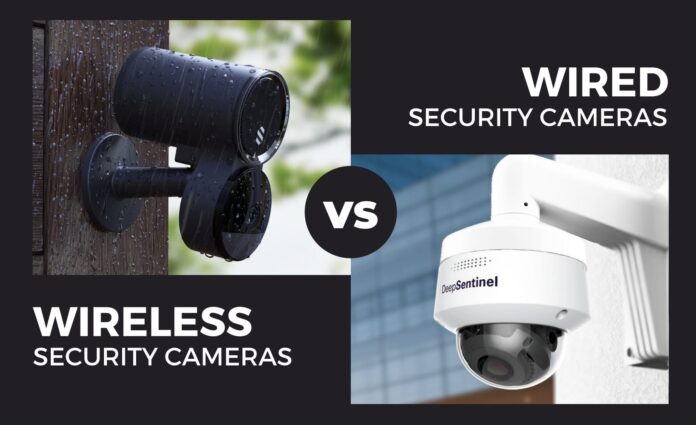Are you considering upgrading your home security system? If so, one of the key decision points is whether to opt for wired or wireless cameras. As more and more homeowners seek to safeguard their property, they may wonder which type of camera setup offers better protection – especially when it comes to keeping an eye on comings and goings around the house during both day and night. Fortunately, there are pros and cons associated with both options that make us armed with the information needed to decide what’s best for our individual homes. Keep reading as we take a closer look at how wired and wireless security cameras compare when it comes to delivering long-term peace of mind!
Overview of wired vs wireless security cameras

When it comes to security cameras, there are two main types to consider: wired and wireless. Wired cameras are connected directly to a power source and a recording device, while wireless cameras use Wi-Fi to transmit data to a recording device. Both options have their pros and cons, but ultimately the decision comes down to your individual needs and preferences. Wired cameras provide a stable connection and are less likely to suffer interference, but they require professional installation and can be more difficult to move or adjust. Wireless cameras, on the other hand, are easy to install and relocate but can suffer from signal disruption and interference. Whichever type of camera you choose, it’s important to properly secure your system with strong passwords and regular updates to ensure your protection.
Advantages and disadvantages of each type
When it comes to choosing a type of anything, there are always advantages and disadvantages to consider. The same is true for programming languages. There is no one “perfect” language that meets every need, so it’s important to carefully weigh the pros and cons of each type before making a decision. One advantage of a high-level language, for example, is that it’s easier to read and write, making it more accessible for beginners. On the other hand, a low-level language offers greater control and efficiency, but is more complicated to learn and therefore better suited for advanced users. Overall, it’s important to assess your specific needs and goals before selecting which programming language to use.
Factors to consider when choosing between wired and wireless security cameras

When it comes to choosing between wired and wireless security cameras, there are a number of factors to consider. Perhaps the most obvious is the convenience factor: wireless cameras tend to be easier and quicker to install, but they may also be vulnerable to signal interference and hacking. On the other hand, wired security cameras may be more secure and reliable, but they also require more time and effort to install properly. Other factors to consider include cost, image quality, and storage capacity. Ultimately, the decision will depend on your specific needs and priorities, so take the time to carefully evaluate each option before making a final choice.
How to install a wired or wireless security camera system
Security camera systems are important for ensuring the safety and security of your property. Installing a wired or wireless security camera system can be a bit overwhelming, but it’s a relatively simple process. Before getting started, determine which type of system will best fit your needs and budget. Wired systems typically require drilling holes for cables and running wires throughout your home. Wireless systems are easier to install, as they do not require any drilling or wiring. Regardless of which system you choose, make sure to follow the manufacturer’s instructions carefully. It’s also important to choose the right location for your cameras to provide the best coverage. By taking the time to properly install your security camera system, you’ll have peace of mind knowing your property is secure.
Common troubleshooting tips for both systems
When it comes to troubleshooting computer and system issues, there are a few key steps to take in order to avoid becoming overwhelmed or frustrated. First, identify the problem by carefully observing any error messages or symptoms. Next, research potential solutions by consulting online forums, and manuals, or contacting the manufacturer’s support team. If a simple fix does not solve the issue, try starting the computer or system in safe mode. This will often allow you to identify and address the root cause of the problem. Lastly, always ensure that your system is up-to-date with the latest software updates and malware protection. By following these steps, you can quickly and effectively troubleshoot and resolve common system issues.
Tips for keeping your home safe with a security camera system

A security camera system is an effective way to ensure the safety of your home and family. However, simply installing cameras is not enough – it’s important to understand the best practices for using them. One tip is to strategically place cameras in areas where they will capture any suspicious activity, such as near entry points or high-value items. Another tip is to ensure that the cameras have adequate lighting and resolution to capture clear images. Additionally, it’s crucial to regularly check and maintain your system to ensure it is functioning properly. By following these tips and being diligent, you can ensure that your security camera system effectively protects your home and loved ones.
After looking at the pros and cons of wired vs wireless security cameras, as well as their installation and troubleshooting tips, you should have a better idea of which type may best suit your home security needs. Ultimately, it’s important to assess the security needs of your home, but also to consider factors such as budget, maintenance requirements, and cosmetic appeal before making your decision. Investing in a security camera system is a great way to protect your family and home from potential intruders. Whether you opt for wired or wireless security camera systems, always remember to stay vigilant and alert when it comes to safety – never take the fact that you have a system for granted. Choose a reputable manufacturer, review their customer service feedback, check tech specs., be mindful of installation difficulties, and use proper maintenance when caring for and troubleshooting your systems throughout their lifetime. Lastly, routinely protect yourself with up-to-date malware software on all connected devices, and be sure to follow recommended steps if any issues arise.









